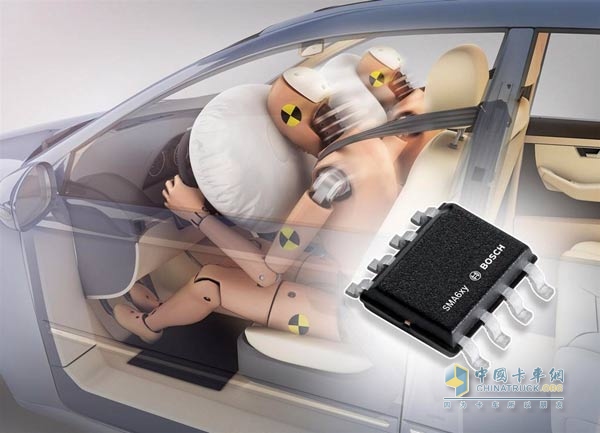Short-cut protection enhanced Bosch's new generation of accelerometers SMA6xy
The latest generation of Bosch acceleration sensors makes the development of airbag systems easier. The implementation of a universal package for SMA6xy sensors (for a variety of applications) makes the airbag system's release approval process easier. The SMA6xy product line includes sensors dedicated to the airbag control unit as well as sensors dedicated to the front, side, and rear of the vehicle. The various sensors in the SMA6xy product family are the best products for airbag systems (Bosch) application-specific integrated circuits.
There are several models of PSI5 sensors for use on the periphery of the vehicle. Acceleration measurement ranges include 120g, 240g, or 480g (refer to SMA68x and SMA69x). In addition to the conventional x and y channels, the PSI5 sensor also has az channels that measure vertical axis acceleration. Therefore, regardless of the orientation of the sensor, there is always a matching model, which gives the airbag system developer more design freedom. Compared with the previous model, the new sensor has a stronger anti-interruption function - a very short interruption of power between the power supply and the sensor after a collision, allowing up to 10 microseconds of power off.

Bosch new generation of accelerometers SMA6x
According to the design, the SPI sensor is installed in the airbag control unit. The SPI sensor measures accelerations up to 120g (SMA66x type). The resolution of acceleration reaches 12 bits. By displaying a reading that exceeds a preset threshold, the Arming foot can help developers activate the airbag algorithm.
The sensors in the SMA6xy product family are all packaged in a compact SOIC8n and are available in single-channel (x, y, or z-axis) or dual-channel (xy or yz-axis) models. Dedicated to critical safety airbag systems, the SMA6xy sensor meets the ASIL D safety level of ISO 26262. SMA6xy samples are currently available.
NewsOriginal title: Making airbag system development easier Bosch's new generation of accelerometers SMA6xy standard package makes design easier
Die casting is a Aluminium or Zinc metal casting process that is characterized by forcing nolten metal under high pressure into a die mold cavity. The mold cavity is created using two hardened tool steel dies which have been machined into shape and work similarly to an injection mould during the process. Most die castings are made from non-ferrous metals, specifically zinc, copper, aluminium, magnesium, lead, pewter, and tin-based alloys. Depending on the type of metal being cast, a hot- or cold-chamber machine is used.
The casting equipment and the metal dies represent large capital costs and this tends to limit the process to high-volume production. Manufacture of parts using die casting is relatively simple, involving only four main steps, which keeps the incremental cost per item low. It is especially suited for a large quantity of small- to medium-sized castings, which is why die casting produces more castings than any other casting process. Die castings are characterized by a very good surface finish (by casting standards) and dimensional consistency.
Die Casting Mould,Pressure Washer Aluminium Die Casting,Power Tools Aluminium Die Casting Mould,Filter Rear Cover Die Casting Mould
Zhejiang Ceeto Molding Technology Co.,Ltd. , http://www.ceetomold.com